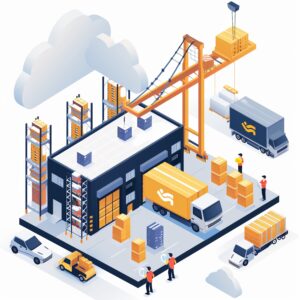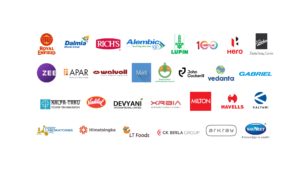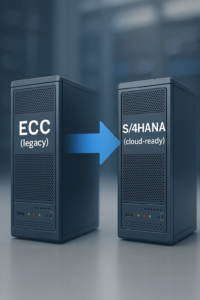User Interface Technology plays a pivotal role in enhancing the user experience and overall efficiency of any software system. When it comes to complex areas like transportation management, such as in the case of SAP TM (Transportation Management), an intuitive and robust user interface is crucial for streamlining processes and making critical decisions. In this blog, we will explore the significance of User Interface Technology in SAP TM and how it revolutionizes the way organizations manage their transportation operations.
SAP TM at a Glance
SAP Transportation Management (SAP TM) is a comprehensive software solution designed to optimize and streamline end-to-end transportation processes in businesses. It enables organizations to efficiently manage transportation requirements, including planning, execution, and monitoring, while ensuring cost savings, improved visibility, and enhanced customer service.
User Interface Technology in SAP TM: Key Components
Web-Based Interface: SAP TM employs a web-based interface that allows users to access the system through a standard web browser. This not only simplifies deployment and reduces the need for client installations but also enhances accessibility across various devices and locations.
Intuitive Dashboards: The user interface is built around intuitive dashboards that provide users with real-time insights into their transportation operations. These dashboards present critical data and key performance indicators in a visually engaging and easy-to-understand format, facilitating informed decision-making.
Role-Based Access: SAP TM offers role-based access control, ensuring that each user has access to the functionalities and data relevant to their specific roles. This enhances security and helps streamline processes by eliminating unnecessary clutter.
Interactive Maps: An integral part of SAP TM’s User Interface Technology is the integration of interactive maps. These maps provide users with real-time visibility into the location and status of shipments, allowing for proactive management and quick response to disruptions.
Responsive Design: With the growing prevalence of mobile devices in business operations, SAP TM’s user interface employs responsive design principles. This ensures that the system adapts seamlessly to various screen sizes and resolutions, providing a consistent user experience across devices.
Benefits of User Interface Technology in SAP TM
Improved Efficiency: The intuitive and user-friendly interface of SAP TM simplifies the navigation and usage of the system, resulting in increased efficiency and productivity for transportation managers and operators.
Enhanced Visibility: Real-time data presented on interactive dashboards and maps gives users unparalleled visibility into their transportation operations. This visibility enables quicker reactions to issues and improved decision-making.
Cost Savings: By optimizing transportation processes and providing easy access to cost data, SAP TM’s user interface contributes to cost savings by minimizing inefficiencies and reducing transportation spend.
Greater Collaboration: Role-based access control and the web-based interface facilitate collaboration among different stakeholders in the transportation process, including shippers, carriers, and logistics service providers.
Customer Satisfaction: With improved visibility and streamlined processes, organizations can meet customer expectations more effectively, leading to higher customer satisfaction levels.
Conclusion
User Interface Technology is a critical component of SAP TM, revolutionizing how organizations manage their transportation operations. With its intuitive dashboards, interactive maps, and role-based access, SAP TM’s user interface simplifies processes, enhances visibility, and contributes to cost savings and customer satisfaction. As transportation management continues to evolve and become more complex, the importance of a user-friendly and efficient interface cannot be overstated. SAP TM’s User Interface Technology enables organizations to meet these challenges head-on, making it a valuable asset for any business involved in transportation management. Read More


 RECOGNISED WORLD OVER SOLUTIONS
RECOGNISED WORLD OVER SOLUTIONS
 Find out how BSC GLOBAL digitally transformed P2P cycle for worlds renowned brand in Automobile
Find out how BSC GLOBAL digitally transformed P2P cycle for worlds renowned brand in Automobile










